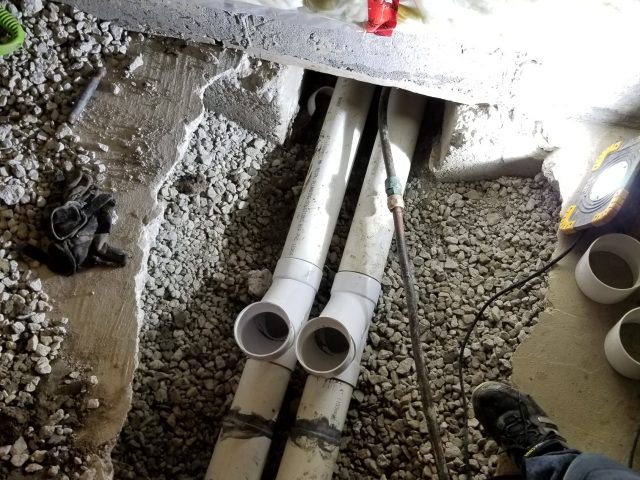Tools Every Homeowner Needs for Plumbing Repairs
As a homeowner, dealing with plumbing issues is almost inevitable. While calling a professional plumber is sometimes necessary, many minor plumbing repairs can be handled on your own—provided you have the right tools. Equipping yourself with a well-stocked plumbing toolkit can save you time, money, and the frustration of waiting for professional help. Here’s a guide to the top tools every homeowner should have for tackling basic plumbing repairs.
1. Adjustable Wrench
An adjustable wrench is a must-have for any plumbing job. This tool is essential for loosening and tightening nuts and bolts, particularly on faucets, showerheads, and other fixtures. Look for a wrench with smooth jaws to avoid damaging chrome finishes. It’s wise to have a few sizes on hand to handle various tasks.
2. Pipe Wrench
A pipe wrench is another staple in plumbing. With its serrated jaws, it provides a strong grip for turning metal pipes and fittings. Pipe wrenches come in different sizes, but a medium-sized one will handle most household needs. For added versatility, consider having two—one to grip the pipe and the other to turn the fitting.
3. Plunger
The humble plunger is perhaps the most frequently used plumbing tool. Whether it’s a clogged toilet, sink, or shower drain, a plunger can often resolve the issue quickly. Make sure you have two types:
- A cup plunger for sinks and flat surfaces.
- A flange plunger for toilets, designed with an additional rubber flap for a better seal.
4. Plumber’s Tape (Teflon Tape)
Plumber’s tape, also known as Teflon tape, is essential for sealing threaded pipe connections. It prevents leaks by creating a tight seal and is simple to use: just wrap it around the threads a few times before connecting fittings. Keep a roll in your toolkit for quick fixes.
5. Plumbing Snake (Drain Auger)
For stubborn clogs that a plunger can’t handle, a plumbing snake or drain auger is invaluable. This tool is designed to break up blockages deep within pipes. Manual snakes are affordable and effective for most household drains, but you might also consider a power auger for tougher clogs.
6. Basin Wrench
A basin wrench is specifically designed for working in tight spaces, such as under sinks. Its long handle and pivoting jaw make it perfect for loosening and tightening faucet nuts in cramped areas. If you plan to replace or repair a faucet, this tool is indispensable.
7. Plumber’s Putty
Plumber’s putty is a soft, moldable sealant used to create watertight seals around drains and fixtures. It’s easy to use and especially handy for installing new sinks or repairing leaks around fixtures. Be sure to read the manufacturer’s instructions, as some surfaces—like granite—may require alternative sealants.
8. Pipe Cutter
If you’re working with copper or plastic pipes, a pipe cutter is a time-saver. This tool allows you to make clean, precise cuts, which are crucial for proper fitting. Tube cutters for copper pipes and PVC cutters for plastic pipes are two types worth considering for your kit.
9. Channel Locks (Tongue-and-Groove Pliers)
Channel locks are versatile pliers that can grip, twist, and hold various components during plumbing repairs. Their adjustable jaws make them suitable for pipes, nuts, and other fittings of different sizes. Invest in a high-quality pair to ensure durability and a strong grip.
10. Bucket and Towels
Although not technically tools, a sturdy bucket and some old towels are essential for any plumbing repair. A bucket can catch water from leaks or drained pipes, while towels help clean up spills and keep your workspace dry. These simple items can prevent water damage and make your repairs less messy.
11. Caulking Gun
A caulking gun is useful for sealing gaps around sinks, bathtubs, and showers to prevent water infiltration. Combined with a waterproof silicone caulk, this tool helps maintain a watertight barrier and keeps mold and mildew at bay.
12. Hex Keys (Allen Wrenches)
Some plumbing fixtures, like certain faucet handles and shower valves, require hex keys for installation or repair. A set of hex keys in various sizes ensures you’re prepared for these specialized tasks.

13. Handheld Mirror
A small handheld mirror can be surprisingly helpful for inspecting hard-to-see areas, such as the back of a faucet or the underside of a sink. Opt for one with an adjustable handle for added convenience.
14. Flashlight or Headlamp
Good lighting is crucial when working in dimly lit spaces like under sinks or inside cabinets. A compact flashlight or hands-free headlamp ensures you can see clearly and work safely.
15. Gloves
Plumbing repairs can be messy, and protecting your hands is important. Heavy-duty rubber or latex gloves provide a barrier against dirt, bacteria, and chemicals. For tasks involving hot pipes or sharp edges, consider padded or heat-resistant gloves.
16. Hack Saw
A hack saw is useful for cutting through metal and plastic pipes, bolts, and screws. Choose one with a comfortable grip and adjustable blade tension for better control and precision.
17. Multi-Bit Screwdriver
A multi-bit screwdriver with interchangeable heads is invaluable for disassembling and assembling plumbing fixtures. Having Phillips, flathead, and specialty bits in one tool saves space and ensures you’re equipped for a variety of screws.
18. Measuring Tape
Accurate measurements are essential when cutting pipes or selecting replacement parts. A sturdy, retractable measuring tape helps ensure your repairs and installations are precise.
Tips for Assembling and Using Your Plumbing Toolkit
- Start Small: Begin with the basics and gradually expand your toolkit as you take on more complex projects.
- Quality Over Quantity: Invest in durable, high-quality tools to ensure reliability and longevity.
- Stay Organized: Keep your tools in a designated toolbox or bag to make them easy to find when needed.
- Learn the Basics: Familiarize yourself with the proper use of each tool to avoid damage and ensure safety.
- Know Your Limits: While many plumbing repairs are DIY-friendly, don’t hesitate to call a professional for complex or hazardous issues.
Final Thoughts
Having the right tools on hand is the first step to becoming a confident and capable DIY plumber. With this toolkit, you’ll be prepared to handle common plumbing repairs and maintain your home’s plumbing system efficiently. Not only will you save money on professional services, but you’ll also gain the satisfaction of solving problems on your own. If you ever face complex issues like repiping, consider consulting experts like those at abacusplumbing.com/plumbing/repiping-services-austin/ for specialized assistance. So, gear up and tackle those plumbing challenges with confidence!




